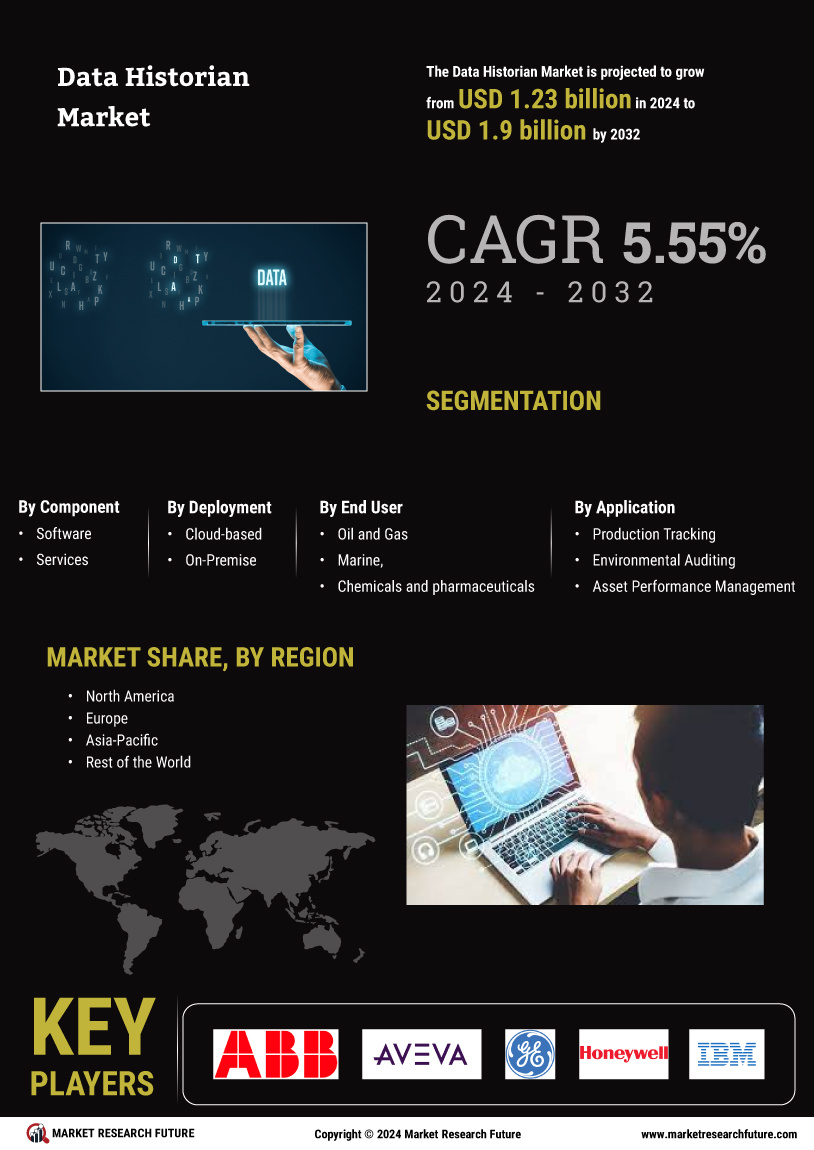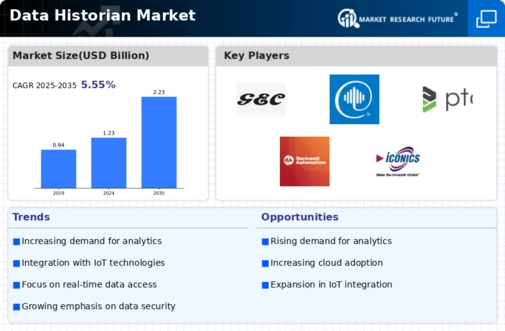Data Historian Market Summary
As per MRFR analysis, the Data Historian Market Size was estimated at 1.224 USD Billion in 2024. The Data Historian industry is projected to grow from 1.292 USD Billion in 2025 to 2.218 USD Billion by 2035, exhibiting a compound annual growth rate (CAGR) of 5.55 during the forecast period 2025 - 2035.
Key Market Trends & Highlights
The Data Historian Market is experiencing robust growth driven by technological advancements and increasing demand for real-time data solutions.
- The integration of advanced technologies is reshaping the Data Historian Market, particularly in North America, which remains the largest market.
- Increased adoption of IoT solutions is propelling growth in the Asia-Pacific region, recognized as the fastest-growing market.
- The software segment continues to dominate the market, while services are emerging as the fastest-growing segment due to evolving customer needs.
- Rising demand for real-time data analysis and growing regulatory compliance requirements are key drivers influencing market expansion.
Market Size & Forecast
| 2024 Market Size | 1.224 (USD Billion) |
| 2035 Market Size | 2.218 (USD Billion) |
| CAGR (2025 - 2035) | 5.55% |
Major Players
OSIsoft (US), Honeywell (US), Siemens (DE), Schneider Electric (FR), Emerson Electric (US), Rockwell Automation (US), General Electric (US), ABB (CH), AVEVA (GB)


















Leave a Comment